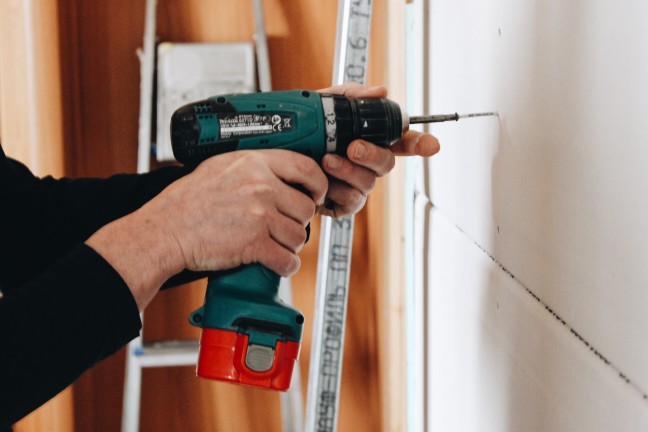Are you looking for simple and easy tips for making home-buying process simple ? Purchasing a house can be one of the most exhilarating experiences in life, but it can also be one of the most daunting. With myriad factors to consider and numerous steps to navigate, the home-buying process can sometimes feel overwhelming. Yet, it doesn't have to be that way.
In this article, we'll provide ten (10) helpful tips designed to simplify the home-buying process, enabling you to navigate your way to your dream home confidently. Whether you are a first-time buyer or an experienced homeowner looking for a change, these practical pointers will streamline your path to homeownership. Let’s start!

Before embarking on the home-buying journey, evaluating your financial standing is crucial. This involves assessing your income, current expenses, debts, and savings to determine how much you can reasonably afford to spend on a new home.
Remember, the general rule is that your monthly mortgage payment should not exceed 28% of your gross monthly income. By setting a realistic budget upfront, you avoid the risk of financial strain or overcommitment down the line.
Securing a mortgage pre-approval before you start your home search is a strategic move. This process involves a lender evaluating your financial health to determine how much they will lend you. A pre-approval provides a more concrete idea of your price range, helping you focus your search on homes within your budget.
More than that, it serves as a testament to sellers that you are a serious buyer with the financial backing to follow through on your offer. This can be particularly advantageous in a competitive market where multiple offers are common. It's crucial, however, to remember that pre-approval is not a guaranteed loan.
It is conditional on your financial circumstances remaining consistent and the property you ultimately select meeting the lender's requirements, including a sufficient appraisal value. As such, it's advisable to maintain your financial stability throughout the home-buying process to ensure a successful final loan approval.
It's crucial to be clear about what you're seeking in a prospective home. Before embarking on your house hunt, create a list of must-haves—features that are non-negotiable—and deal-breakers that would deter you from purchasing a property.
This could range from the size of the home, its location, how close it is to amenities or work, the safety of the neighborhood, to the quality of the local school district. This list will serve as a guide to narrow down options and keep your search focused. However, maintain some flexibility.
Finding a property that meets all your criteria may be difficult, and a degree of compromise can open up more potential homes without sacrificing your most important needs.
Working with a skilled real estate agent can greatly ease the home-buying journey. These professionals bring a wealth of knowledge about the housing market, and their experience in sourcing suitable properties and handling negotiations can be invaluable.
An agent can help you navigate the myriad steps involved in buying a home, from initial browsing to making an offer and closing the deal. They can also provide useful insights about potential areas and properties based on your preferences.

When selecting a real estate agent, ensure they understand your requirements and priorities and that they are someone you can trust and feel comfortable with. A strong, collaborative relationship with your agent will contribute significantly to a smoother, more successful home-buying experience.
A comprehensive home inspection is a must. This step uncovers any hidden issues, such as structural defects or outdated systems, that could become costly problems. Engaging a professional inspector can save you from unexpected headaches and expenses.
In some cases, identified problems could be deal-breakers, enabling you to make an informed decision about whether or not to proceed with the purchase. Remember, hiring a professional inspector pales in comparison to the potential costs of unforeseen repairs or renovations. Consider it an investment in your peace of mind and the longevity of your potential new home.
When you buy a home, the financial commitment certainly doesn't stop at the purchase price. There are many additional costs that buyers sometimes overlook in their initial calculations. These include fees for home inspections, which are vital to ensure the home doesn't have hidden issues, and closing costs, which can include loan origination fees, title insurance, and more.
It's essential to have a plan in place for saving money for a house to cover these various expenses. Additionally, you'll need to account for the expenses associated with moving into your new home. Finally, immediate repairs or renovations may be required to make the house fit your living standards. These could range from minor cosmetic upgrades to significant overhauls of key systems like plumbing or electrical.
Understanding and accounting for these costs upfront can help you set a realistic budget and ensure that you're financially prepared for the true cost of homeownership.
Here’s a more comprehensive guide on this topic: How much are closing costs in Alabama?
The home-buying process involves considerable paperwork, spanning from the initial offer to the closing documents. Ensure you comprehend each document before signing, and don't hesitate to seek clarification on any points of confusion. Patience and diligence are key during this stage.
In this paperwork-heavy process, don't be afraid to ask questions if something isn't clear to you. A trusted real estate agent or a real estate attorney can prove invaluable in explaining the sometimes complex language found in these documents. They can help you understand the fine print so you know what you're signing.
Remember, when it comes to your future home and such a significant financial investment, there are no silly questions. Patience, diligence, and a desire to understand can help you navigate the paperwork seamlessly and make a well-informed purchase decision.
Homeownership is a considerable long-term investment beyond just providing a place to live. It significantly impacts your financial status and lifestyle. It requires thinking ahead, considering your current needs and future possibilities.
Consider your life a decade from now. Plans for family expansion or potential relocations for work could influence the type of home you need. Even lifestyle changes like adopting sustainability practices, could dictate your home choice.
In essence, homeownership should be viewed as a long-term commitment aligned with future plans. This approach ensures a suitable choice that accommodates both your current situation and future changes, making it a rewarding investment.
Embracing homeownership also means preparing for unexpected costs that inevitably come with maintaining a property. These could be immediate needs, like repairs to a leaking roof, replacing a faulty appliance, or regular maintenance activities such as servicing the HVAC system or repainting the exteriors.
These costs can add up quickly and are often unpredictable. That's why it's prudent to establish an emergency fund specifically for your home. This fund should be separate from your regular savings or checking account, providing a financial safety net for unforeseen home-related expenses.
By setting aside a small amount each month into this fund, you'll have the peace of mind of knowing you're prepared to tackle any home maintenance or repair challenges that come your way.
Home-buying can be a lengthy and sometimes stressful process. However, keeping calm and maintaining a composed mindset can make the journey more manageable. Remember, patience, preparedness, and informed decision-making are the cornerstones of a successful home-buying experience.
These ten tips we've shared are designed to shed light on key aspects of the home-buying process, helping to equip you with the knowledge and confidence you need to navigate the journey successfully. From understanding your financial position to doing a thorough research and surrounding yourself with the right team of professionals, each step is crucial in making the process as simple and stress-free as possible.
Remember, buying a home is not just a financial commitment, it's a personal journey and a major life milestone. Following these tips will prepare you to make informed decisions and pave the way to your dream home. Happy house hunting!
When it comes to hiring a contractor for a home renovation or construction project, the natural inclination is to choose the lowest bid. It's easy to see the appeal - saving money on a project is always enticing. However, there are several reasons why choosing the lowest bid may not always be the best decision.
In this article, we'll explore the reasons to be wary of low contractor bids, the potential risks of accepting them, and why they may not be the bargain they appear to be.
When evaluating contractor bids, it's essential to consider more than just the quoted price. A key factor to examine is whether a contractor has adequate insurance coverage and licensing.
Inadequate insurance exposes you to financial liabilities if accidents or damages occur during the project. For instance, if a worker sustains an injury on your property or damages your home, you could be held responsible for the associated expenses if the contractor's insurance is insufficient.

Further, proper insurance and licensing are crucial in resolving disputes between homeowners and contractors. If your contractor lacks insurance or a valid license, your legal options for seeking compensation or holding them accountable for issues such as poor workmanship, delays, or other problems may be limited; having to sue for property damage is a particularly miserable way to have your renovations grind to a screeching halt.
As you evaluate contractor bids, it's crucial to consider the potential risks associated with inadequate insurance coverage and licensing. Always verify that your chosen contractor meets all requirements before beginning any project.
By doing so, you can enjoy a high-quality, worry-free renovation or construction experience while safeguarding your investment and property value.
While the use of subpar materials or construction techniques is considered a cost-cutting measure and may lower the initial cost of the project, it can lead to long-term issues and added expenses. Thus, it's essential to know the potential risks associated with subpar materials and construction techniques when evaluating low contractor bids.
Using inferior materials or employing substandard construction techniques can significantly impact the durability and lifespan of your project. Subpar materials and construction techniques can also result in safety hazards or code violations, putting you and your family at risk. Inferior materials may not provide the necessary structural support, while poor construction techniques can lead to weak joints, leaks, or even collapses.

Choosing a contractor who uses high-quality materials and employs proven techniques may be a more cost-effective decision in the long run, ensuring a durable, safe, and valuable finished project.
When evaluating low contractor bids, it's crucial to consider the potential risks associated with inexperienced or unqualified labor. Prioritizing a contractor with a skilled and qualified workforce may be a wiser investment in the long run, ensuring a high-quality, safe, and valuable finished project.
Inexperienced or unqualified laborers may lack the skills and expertise needed to execute the project efficiently and to a high standard. This can result in compromised workmanship, necessitating additional repairs, alterations, or even complete rework. Poor workmanship can also lead to project delays and mismanagement.
Moreover, inexperienced or unqualified laborers may be unaware of safety protocols and regulations, increasing the risk of accidents or injuries on the job site. As the homeowner, you could be liable for accidents or injuries due to inexperienced workers' negligence.
Therefore, focus on the contractor's experience, qualifications, and track record of successful projects to maximize your investment and achieve a satisfying construction experience as you review bids.
To win a contract, some contractors may underestimate the amount of time required to complete the project. While this approach may seem appealing initially, it can lead to many problems and delays during construction.
When contractors commit to an unrealistic timeline, they may rush the work to meet the deadline. Rushed work can result in compromised quality, as workers may cut corners or make mistakes due to the pressure to finish quickly. This can lead to a need for future repairs or even jeopardize the project's structural integrity.
Project delays can frustrate homeowners, as they disrupt plans and extend the time it takes to enjoy the finished project. Delays can also have financial implications, as extended timelines may increase costs for both the contractor and the homeowner.
As you review low contractor bids, be cautious of unrealistic project timelines and potential delays. Prioritize contractors who provide realistic timelines and have a track record of completing projects on time and within budget. Doing so can minimize frustration, financial impact, and risks associated with rushed work, ultimately leading to a more successful construction experience.
Comprehensive warranty coverage offers protection against defects in workmanship and materials, ensuring that any issues that arise after project completion are addressed promptly and at no additional cost to the homeowner. A contractor who offers limited warranty coverage may leave you vulnerable to unexpected expenses if issues arise after the project is completed.
A contractor who offers comprehensive support will be available to address any questions, concerns, or problems that may arise after the project is completed. In contrast, a contractor who provides limited support may be difficult to reach or unwilling to address issues, leading to dissatisfaction and frustration for the homeowner.
Choose contractors who offer comprehensive warranties and support to ensure that any issues that arise after project completion are addressed promptly and effectively. Doing so can minimize the risk of unexpected expenses and frustration, leading to a more successful construction experience and long-lasting satisfaction with the completed project.
Unethical business practices can include dishonesty and misrepresenting project details, such as underestimating the scope of work or overpromising deliverables. Contractors may also misrepresent their qualifications, experience, or the quality of materials they plan to use. These deceptive practices can lead to project delays, poor workmanship, and potential legal issues.
Another unethical business practice is the exploitation of workers. Contractors offering low bids may cut costs by underpaying workers, hiring unqualified or inexperienced labor, or ignoring worker safety regulations. These practices not only harm the workers themselves but can also negatively impact the quality and safety of the finished project.
Contractors who engage in unethical business practices create unfair competition within the industry, making it difficult for honest contractors to compete on a level playing field. This can lead to market distortion, as homeowners may be more likely to choose low-priced contractors without understanding these unethical practices' potential risks and consequences.
Prioritize contractors who are known for their ethical conduct and commitment to quality work. By doing so, you can minimize the risk of negative consequences associated with dishonesty and exploitation, leading to a more successful construction experience and a better overall outcome for your project.
While it's natural to be drawn to low contractor bids, it's important to remember that the lowest bid doesn't always equate to the best value. Consider the potential risks outlined above before making your decision, and ensure that you're selecting a contractor capable of delivering high-quality work at a fair price.
By doing your due diligence and thoroughly researching each contractor, you can make an informed decision that will result in a successful and satisfying project.
Investing in a run-down house and then selling it for a profit is an exciting prospect, but one obstacle that must be overcome is a lack of financial resources.
As a beginner, obtaining funding for your transaction can be extremely difficult. Most money lenders require some prior experience, which you are currently gaining through your current job.
So, continue reading our guide on fix and flip loans for beginners to get you started on your new journey!
Fix, and flip loans are short-term loans that real estate investors use to purchase and repair houses before reselling them for a profit is, known as a bridge loan.
This type of loan provides investors with the funds they require to purchase and renovate a piece of real estate. The sale proceeds can pay off the loans taken out to buy the property.
It is impossible to use the loans for other types of investments, such as school construction, because they are only available for residential real estate investments.

Most properties are purchased at a low cost to maximize the profit-to-expense ratio. The loan for the fix and flip is included in the expenses.
Some of the houses purchased were obtained through foreclosures or auctions conducted by the owners or banks.
The loan lenders must determine whether or not the house will generate a profit, as well as your financial standing.
The loans are provided to allow:
The borrower can buy the house from a quick seller and put it back on the market at a higher price.
The borrower can purchase a house, renovate it and sell it for a higher price.
The borrower can reconstruct a house by demolishing parts like the kitchen and then building a better one. They can, after that, sell it for a better price.
Depending on your credit, experience, and financial goals, there are various loans to choose from.
When trying to obtain a fix and flip loan, the goal is to get money to complete your project, and there are a variety of loan options.
You need to look at the interest rates and working terms of lenders to find the cheapest and best option to make you more profit.
Below we’ve laid out the suitable fix and flip loans for beginners:
Bridge loans are the most common type of fix and flip loans. It is helpful to bridge the gap between buying a property and securing long-term financing.
It is easy to qualify for one and offers loans with low-interest rates.
Some bridge loans don’t include renovation and construction funds. It’s a little complicated in that the borrower can sell the property off to another real estate agent who will do the renovation.
For this reason, fix, and flip loans can be categorized under the larger category of bridge loans and not the other way round. It is simply because fix and flip loans include renovation and construction funds.

This loan is used by a reputable investor who has several successful flips under his belt.
Hard money lenders are not affiliated with a bank. Your friend or an online lender may be able to provide you with the funds you require, but the interest rates are often high, and the repayment terms are short.
Although this type of lender may not provide you with as much money as you would like, they can quickly provide you with the capital you require.
🔑Key Insight: Obtaining a conventional loan may be complicated. For instance, for people who have poor credit scores, this type of loan is a convenient option for obtaining a conventional loan.
This is the process by which you finance an existing property to raise funds for your project.
This option takes advantage of the equity that has accrued in your home over time and provides you with cash in exchange for taking out a larger mortgage payment. You can use part of the money to pay off your mortgage and keep the rest for yourself.
💡Delve Deeper: The option to receive a quick cash exchange has several benefits for fix and flip loans for beginners and when a seller is selling their house. Check out our article on the benefits of accepting/producing a cash offer!
Alternatively, you could invest the extra money in your house flipping project. The amount you receive is determined by the value of your home, which is typically no more than 80 percent.
The borrower and seller strike a deal on their terms and conditions. A payment plan and a contract are decided upon, after which the seller can fund the borrower.
There is, however, a significant risk for the seller, who needs the money from the buyer and investigating more money into the project can be tricky. Therefore, the interest rates are usually high with a short payment period.
🔥Hot Tip: This type of loan option should be your last option if the other sources fail.
The three steps below are used to obtain most fix and flip loans:
The lending agent will determine whether or not the project meets their requirements and is financially viable.
The agent will also look into your financial history, credit history, and work experience. As a beginner, you shouldn’t be concerned because this is a background check to ensure that you can handle the money responsibly.
If all of their requirements are met, you will be approved for funding.
There is a little paperwork to be filled in before the money can be given to you.
Once you have filled it in and completed it to the agent’s satisfaction, you are eligible to receive the funds.

Some agents might develop a draw schedule for the loans with you. It is a staging system where money is distributed to the borrower after completing a particular stage.
An inspector confirms that everything is in order after every stage, after which more funds are transferred to the borrower till project completion.
The benefits and drawbacks of fix and flip loans
There are various options when choosing your perfect flip and fix loan; however, they have advantages and disadvantages that you must always consider before making a financial decision!
| Benefits of Fix and Fix Loans: | Drawbacks of Fix and Flip Loans: |
| ✔️Quick Funds: Flip and fix loans take a short time to acquire compared to traditional home loans, which may take weeks. | ❌Short Period: Typically, the loans are over a short period, but if the flipping process takes a long time, it can be risky. Furthermore, the renovation or selling process may be long, imposing additional risks. |
| ✔️Flexibility: There is little paperwork, and fixed conditions are met with fix and flip loans. Borrowers can acquire the loan without meeting the loan’s qualifications | ❌Cash burden: As loans don’t take a long time to be approved, the planning time is limited meaning things such as utility cost may not be considered. |
| ✔️Fewer risks: Most flip and fix loans work with the property itself, reducing the chances of losing your home or assets. | |
| ✔️Property diversification: The loans allow quick expansion of their property for upcoming real-estate investors. It boosts their portfolio and achievements. | |
| ✔️Quick returns: Flip and fix loans have a short term, often 6-12 months. It allows the investors to see a quick return over time and allows other projects to begin. | |
| ✔️Big profits: If the process goes through, a large profit is usually incurred. The greater the number of renovation activities, the greater the potential profit received. |